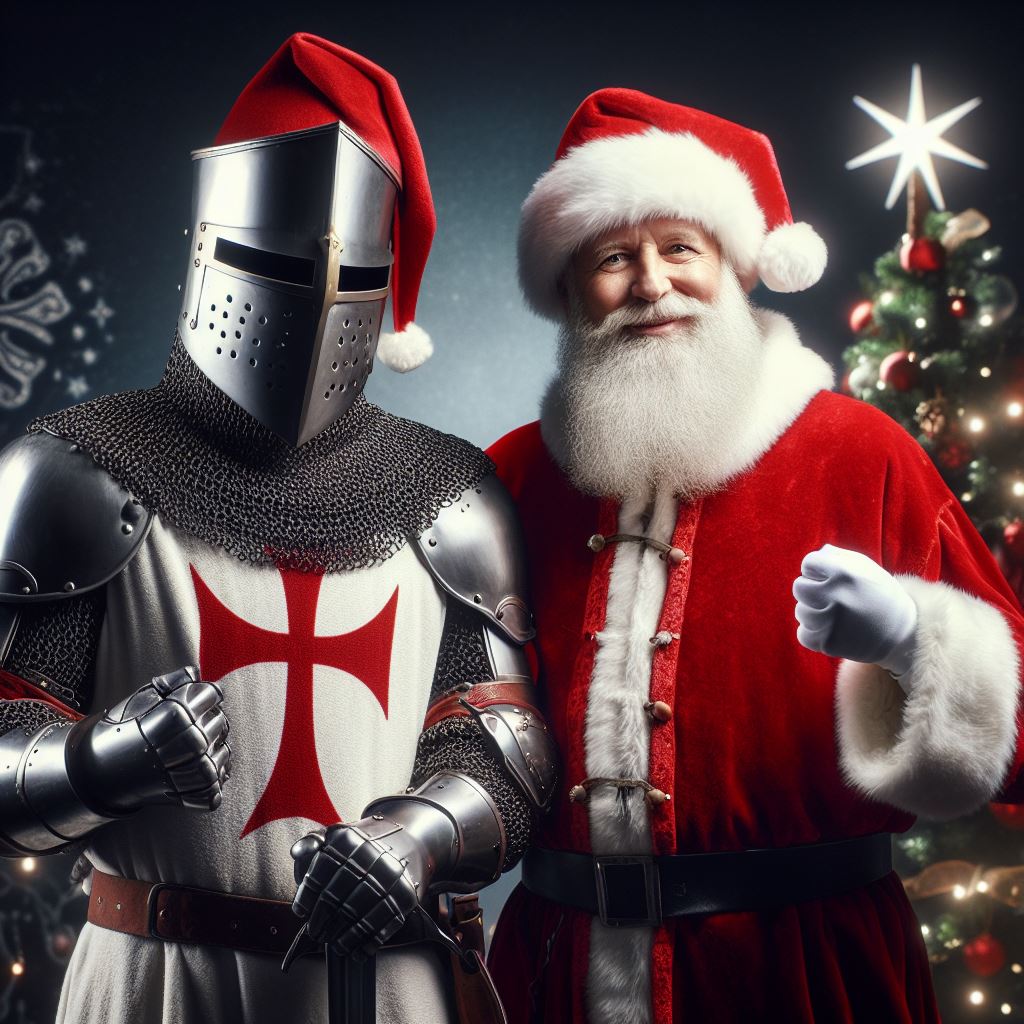At Christmas, our thoughts might turn to Santa Claus or Father Christmas. We’re told from childhood that he’s based on a true figure called Saint Nicholas. But he’s certainly drifted far from the original person.
THE IDEAL TEMPLAR CHRISTMAS PRESENT: Quest for the True Cross
Saint Nicholas: from bishop to funny fat man!
So, how on earth did a late Roman bishop in Asia Minor transform into a ruddy-faced, white bearded, jovial fellow in a red costume popping down thousands of chimneys every Christmas Eve? Well, it’s a long story. As as ever, we can think the creative thinking of the medieval mind for a great deal of it.
So – let’s go through some of the “facts” about Saint Nicholas:
- He was born in Patara in modern Turkey
- Nicholas was very religious from an early age
- His parents died in a plague
- The future saint stopped three girls being sold into prostitution by their poverty-stricken father by throwing bags of gold through the window of their house on consecutive nights (this story varies a lot in different versions)
- He went to the town of Myra (modern Demre in Turkey) where God directed the local people to elect him bishop
- Nicholas was imprisoned by the emperor Diocletian in the last great persecution of Christians and then freed by the subsequent emperor Constantine, who had converted to Christianity and turned the empire to the faith
- Constantine set three imprisoned men free after Nicholas appeared to him in a dream
- Bishop Nicholas attended the Council of Nicaea and signed the Nicene Creed
- He also punched the well-known heretical thinker Arius while they were both at the Council of Nicaea
- After death, his body was embalmed and, as is the case with many saints, it refused to corrupt exuding sweet smells and curing the diseases and ailments of those who came close
All of which made Nicholas a popular saint in the early Middle Ages. A Justinian-era basilica was erected and the Varangian Guard, the fearsome Vikings who protected the Byzantine emperors, regarded him as their saint. Sailors adopted him as a patron saint because of a story he had appeared during a storm and rescued a ship bound for the bottom of the sea. Mariners would pray that Saint Nicholas should guide their tiller in the journey ahead.
After the Seljuk Turks defeated the Byzantine emperor at the Battle of Manzikert in 1071, some sailors took the remains of Saint Nicholas from Myra to the town of Bari in southern Italy, then part of the Byzantine empire. His spread his fame throughout western Europe. Hundreds of churches in England adopted his name and Nicholas became massively popular in Russia.
So how did Saint Nicholas become Santa Claus? The majority opinion seems to be the origin of the transformation was in the Low Countries, the modern Netherlands. In early December, the feast of Sinterklaas – Saint Nicholas – took shape. Rooted in the story of the saint’s generosity to the father of the three girls destined for prostitution, came the idea of a saint who gave presents without restraint.
READ MORE: Prester John – the king who never existed
However, some see an attempt by the church to Christianise the northern European pagan god Odin who also rode through the sky though on a horse (not a reindeer!). And where Odin had raven helpers, Sinterklaas had helpers with blackened faces. What is certain is that Dutch migrants took Sinterklaas to America and it’s there that he underwent the biggest changes. The green coat became red. The black faced helpers (rather politically incorrect) were replaced by little elves. Reindeer multiplied drawing a sparkling sleigh.
I’m told, incidentally, that it’s a bit of a myth that Coca-Cola invented the current image of Santa Claus in the early 20th century as an advertising character. The image had already been established by the end of the 19th century.













4 thoughts on “Saint Nicholas – the real Santa Claus”